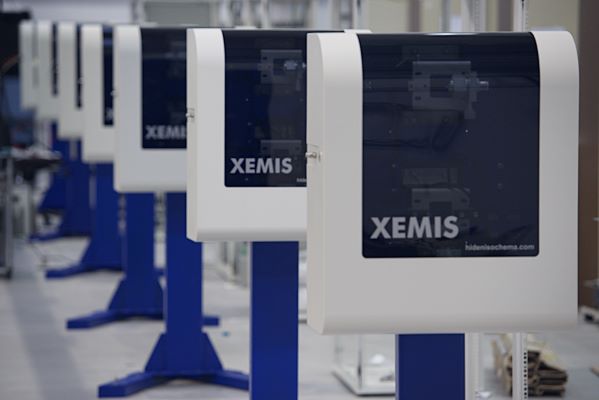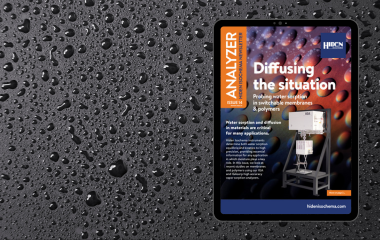How Ionic Liquids Can Drive Sustainable Chemistry
Without chemistry, various medications and products known today would not exist. However, it is important to acknowledge that chemical procedures can produce a lot of waste. Within the chemical industry, its levels of waste grew by 21% during 2012 – 2018.¹ New and innovative ideas are required to lessen the impact of chemistry processes. Sustainable chemistry is one way of ensuring resources are optimized and that less pollution is generated. Its focus is upon increasing the effectiveness of resources, ensuring that chemical processes can still be undertaken and greener products can be made, without creating dangerous materials as a consequence.
Ionic liquids, which consist of salts in a liquid form within a reduced temperature (normally under 100°c), can be used to enhance sustainable chemistry. Not only do ionic liquids adhere to the ideas suggested by green chemistry, thanks to their ability to decrease waste, as they can be recycled, and become more effective, as they can be applied in catalytic procedures, but their characteristics, depending on the blend of cations and anions, are extremely adaptable. Read on to learn more about ionic liquids and how they can improve the capabilities of sustainable chemistry.

Reduction of Volatile Organic Compounds Emissions
A primary environmental advantage of ionic liquids stems from their low vapor pressures. This essentially means they do not readily evaporate. Unlike traditional organic solvents, the use of ionic liquids significantly reduces the emission of volatile organic compounds (VOCs). VOCs are notorious for their role in air pollution and their contribution to the formation of ground-level ozone, which poses health risks and environmental issues such as photochemical smog. Therefore, substituting conventional solvents with ionic liquids can lead to cleaner production processes by minimizing atmospheric emissions of harmful compounds.
Enhanced Safety and Thermal Stability
The inherent non-flammability and thermal stability of ionic liquids enhance the safety of chemical processes. These properties allow for use under more extreme conditions, such as higher temperatures, to increase reaction rates and yields. This capability improves the efficiency of chemical reactions and broadens the scope of possible reactions that can be safely carried out, particularly in large-scale industrial settings where safety is a paramount concern.
Facilitation of Green Solvent Applications
Ionic liquids are dubbed “green solvents”. This title comes from their ability to dissolve a broad spectrum of organic and inorganic compounds. These compounds facilitate the utilization of more sustainable starting materials. The versatility from ionic liquids is crucial for developing new, eco-friendly reaction pathways. For instance, ionic liquids have played a significant role in the dissolution and processing of biomass, which is a cornerstone in the production of biofuels and biochemicals. By enabling the breakdown and conversion of biomass into valuable chemicals, ionic liquids support the shift from fossil fuel dependency towards renewable biological resources.
Recyclability and Waste Reduction
Another significant environmental benefit of ionic liquids is their recyclability. Their non-volatile nature simplifies the separation of desired products from:
- The reaction mixtures
- The recovery of the ionic liquid itself.
This aspect not only minimizes waste generation but also reduces the demand for producing new solvents. The ability to reuse these materials multiple times without significant degradation in performance underscores their role in:
- Promoting sustainable industrial practices
- Reducing the overall ecological footprint of chemical manufacturing.
Customizability for Specific Tasks
The chemical structure of ionic liquids can be finely tuned by modifying their cationic and anionic components. This adaptability allows the synthesis of task-specific ionic liquids tailored for particular applications, such as catalysis, separation processes, or other specialized chemical functions. The design of such task-specific ionic liquids is a robust strategy to enhance process efficiency, specificity, and sustainability. Matching the solvent properties precisely to the process needs can achieve more effective and less resource-intensive chemical production.
Capturing the Potential of Sustainable Chemistry through Ionic Liquids
As we move towards the future, a focus must be placed upon the sustainability of chemical processes. With their adjustable attributes playing a crucial part in improving their recyclability and lowering their toxicity, ionic liquids go hand-in-hand with sustainable chemistry. Areas, within sustainable chemistry, that utilize the abilities of ionic liquids include catalysis, where they can be used as catalysts that can enhance the chemical procedure’s effectiveness, and energy storage and transfers, including in solar and fuel cells and batteries. Ionic liquids can even be used for trapping greenhouse gasses when applied as solvents.
At Hiden Isochema, we recognize the significance of ionic liquids and their application in sustainable chemistry. By utilizing the equipment from our IGA, IGAsorp and XEMIS series, detailed studies of gas and vapor diffusion solubility and diffusivity in ionic liquids are possible. Isotherm measurements at multiple temperatures yield absorption thermodynamics, while mass-time kinetics are simultaneously recorded and analysed. You can visit our blog for more information about ionic liquids, such as ionic liquid gas separation. There are also other topics available like MOF-derived nanoporous materials or gas sorption. Apply our gravimetric instruments and empower the analysis of your ionic liquids. That way they can be used to their fullest potential.
References
- Waste Generation in the Chemical Industry (Indicator). European Environment Agency. https://www.eea.europa.eu/en/european-zero-pollution-dashboards/indicators/waste-generation-in-the-chemical-industry. Published 16th April 2024. Updated 17th April 2024. Accessed 9th May 2024.


